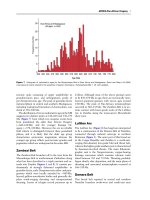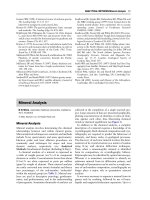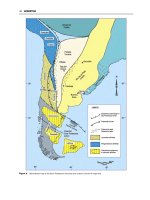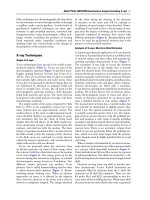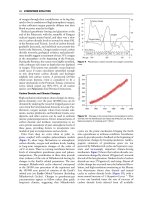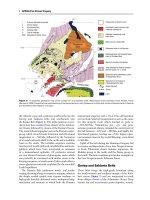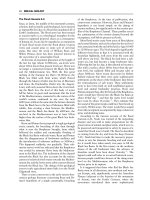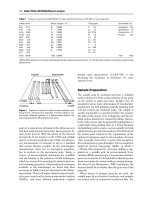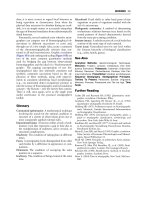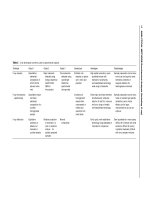Encyclopedia of geology, five volume set, volume 1 5 (encyclopedia of geology series) ( PDFDrive ) 1960
Bạn đang xem bản rút gọn của tài liệu. Xem và tải ngay bản đầy đủ của tài liệu tại đây (123.35 KB, 1 trang )
OCEANIA (INCLUDING FIJI, PNG AND SOLOMONS) 117
Figure 6 Geological map of New Caledonia (excluding the Loyalty Islands, Belep Islands, and Isle de Pines). The pre Cretaceous
basement comprises the Koh ophiolite and the Teremba, Boghen, and Central Chain terranes. These are unconformably overlain by
mid Cretaceous sediments forming a mid Cretaceous to Late Eocene terrane or successor basin sequence. Great thrust sheets of
Poya Terrane basalts and ultramafic rocks (the ultramafic nappe), emplaced in the Late Eocene, overlie the older terranes. Miocene
marine sediments are preserved on the south west coast. Map drawn by L Cotterall, Geology Department, Auckland University.
olistostrome that contains reworked components
of the successor basin sediments, including upper
Eocene bioclastic limestone and the flysch.
the Cretaceous–Eocene sediments of northern New
Caledonia. The Eocene Loyalty Island volcanic arc
formed above the subduction zone.
The Younger Terranes
Miocene
The New Caledonian ophiolite, emplaced in the Late
Eocene, overlies all the older rocks on the island. It
consists of two units that appear to be geochemically
unrelated: an overlying mainly harzburgitic ultramafic sheet (the ultramafic nappe) and the dominantly
basic volcanic Poya terrane. The Poya terrane is composed of slices of geochemically variable submarine
mafic volcanic rocks, mainly pillow lavas, together
with dolerites and minor gabbros, and associated
abyssal sediments. The ophiolite was emplaced as
a result of Eocene convergence along the eastern
margin of New Caledonia. Convergence was driven
by the opening of the North Loyalty and South Fiji
basins. Eastward-dipping subduction associated with
the convergence consumed most of the South Loyalty
Basin and caused high-pressure metamorphism of
Early Miocene coral reef and shallow-water marine
sediments containing material derived from the ultramafic sheet are exposed at Nepoui. Small intrusions
of granodiorite of Miocene age intrude the ultramafic
sheet east of Noume´ a, and north-east of Canala.
Buoyancy-driven uplift in the Miocene has exhumed
and exposed the high-pressure metamorphosed Cretaceous–Eocene sediments on the north-eastern coast
of New Caledonia.
Economic Minerals
Since the Miocene, New Caledonia has been emergent and subjected to intensive tropical weathering,
with the result that thick lateritic soils developed on
the ultramafic rocks. The laterites have been mined
for nickel, cobalt, and iron since the late nineteenth
